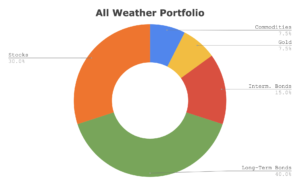
A “perfect storm” of challenges faces Canadian investors this RRSP season, according to a a national online study conducted on the Angus Reid Forum Panel for Co-operators, released Tuesday. Jan. 25.
After surveying financial professionals across the banking and wealth management sectors, the panel believes this “perfect storm” can be attributed to the uncertainty of this past year and to DIY [Do It Yourself] investing strategies.
2022 is poised to be a unique RRSP season because of multiple unique market conditions, the study finds: 58 per cent agree that in the face of rising consumer debt, natural disasters (climate change), Omicron, and looming hikes in interest rates, we are approaching a “perfect storm” of challenges, a figure that jumps to 65 per cent in Quebec.
Key findings
- 80 per cent percent of respondents say that when people experience financial mishaps or losses, many feel overcome with doubt, which leads to indecision and in-action.
- 76 per cent hypothesize that for many Canadians living in urban centres, home ownership is increasingly feeling out of reach, and because of this, many are looking for DIY investment strategies.
- 93 per cent say the majority of Canadians have unleveraged opportunities in that they haven’t maximized their RRSP planning and TFSAs.
“By initiating a much-needed national conversation around financial literacy, the hope is that more Canadians will feel empowered to seek counsel from a financial advisor and develop a strategic financial plan to help achieve their goals,” Co-operators said in a press release.
Conducted in January 2021, “Canadian Attitudes on RRSPs” was designed to examine the state of RRSPs, TFSAs and retirement planning strategies that Canadians are using to secure their financial futures – all from the perspective of industry professionals with their ears to the ground across the country.
Consumer confusion appears to be rampant when it comes to understanding the different roles of RRSPs and TFSAs. 90 per cent of financial professionals believe most Canadians” have a lot of confusion” about those two key retirement savings vehicles.
This is reflected in similar confusion about Saving versus Investing: 70 per cent say they see Canadians declining in their ability to differentiate between saving and investing.
The study also sees what it calls “unleveraged opportunities”: 93 per cent think the majority of Canadians haven’t yet maximized their opportunities with RRSP planning, TFSAs, and other programs.
A majority (85%) of industry pros attribute the influence of today’s “culture of now” as hindering people from seeing retirement planning as a priority.
The venerable Registered Retirement Savings Plan (RRSP) also seems to be suffering from the challenge of an “old school image”: 57 per cent say too many Canadians today see RRSPs as “an investing tool of the past” that is no longer as attractive today.
Adding to the angst is the continuing decline of availability of Defined Pension [DB] plans offered by employers: 85 per cent think defined benefit pension plans are going extinct. They too are viewed as a thing of the past: something Canadians don’t expect to have when they retire.
No surprise then that Early Retirement is largely regarded as a myth: 92 per cent of advisors believe that because most Canadians aren’t saving enough for retirement, concepts like “early retirement” are becoming more elusive.
What’s holding Canadians back
When it comes to identifying the causes for Canadians holding back on retirement saving, the survey found financial losses generally contribute to indecision: 80 per cent of advisors say when Canadians experience financial mishaps or losses, many become overcome with doubt, which then leads to indecision and in-action. In addition, 73 per cent see a stigma of shame among many Canadians around financial mishaps or losses.
Just the fact they feel they are not saving added to their stress: 80 per cent see many Canadians feeling paralyzed from the stress of not having enough savings to meet their long-term needs. And many also feel pressure to be perceived as “financially in-the-know.” 65 per cent think there is social pressure among Canadians to appear “financially savvy.” Continue Reading…





